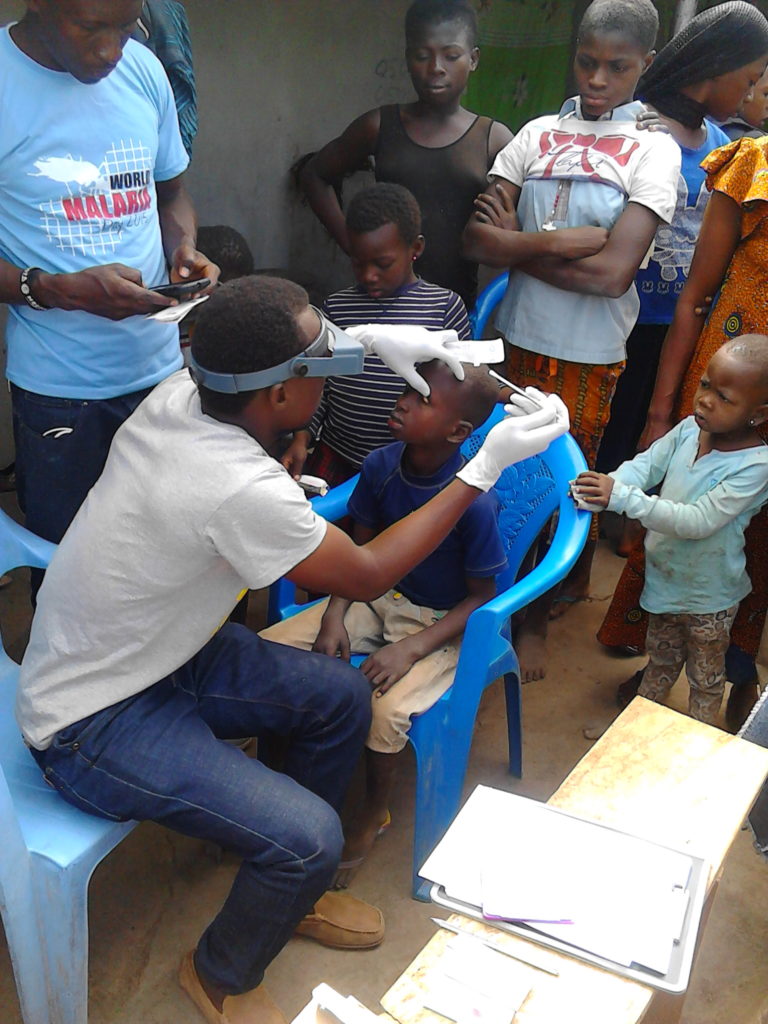It’s Time to Take Togo Off the WHO Trachoma List
February 28th, 2018
Trachoma is an eye infection caused by the bacterium Chlamydia trachomatis. Although it is both treatable and preventable, trachoma remains a leading infectious cause of blindness worldwide. The World Health Organization (WHO) has set a global goal to eliminate trachoma as a public health problem in all countries by 2020.
But what does it mean for countries to “eliminate trachoma?” The WHO has two criteria that countries have to meet to be verified for elimination of trachoma. First, they have to be able to show that trachomatous inflammation-follicular (TF) prevalence is under 5% among children 1–9 years. Second, they must show that trachomatous trichiasis (TT) prevalence under 0.2%, or fewer than 2 cases of TT per 1,000 people 15 years of age and above.[1]
In order to reach these criteria, countries with trachoma provide mass drug treatment in communities where TF prevalence is equal to or greater than 5% among children 1–9 years. Since FY2011, the USAID-funded, FHI 360-managed END in Africa project has supported trachoma treatment in four of its six operational countries—Burkina Faso, Cote d’Ivoire, Ghana, and Niger (the two remaining countries—Sierra Leone and Togo—have never treated for trachoma because their baseline trachoma prevalence was below the WHO threshold for treatment). To date, 109 of the 134 districts (81.3%) that were treating for trachoma across the four countries have stopped treatment and are either in post-treatment surveillance or are preparing to submit dossiers to the WHO for review and verification of elimination of trachoma.
Togo’s Trachoma Story
Togo is unusual in that although the country never needed to conduct treatment for trachoma (because surveys of the trachoma situation in 2006, 2009, and 2011 had shown that TF prevalence in children 1–9 years was below 5% in every district), the country is still on the WHO’s list of trachoma-endemic countries. This is the case because TT prevalence was above the WHO threshold of under 0.2% in some districts and countries can only be removed from the trachoma list when they have met both WHO criteria for verification of elimination.
To help Togo remedy its trachoma situation, the END in Africa project has supported interventions to reduce TT prevalence to below 0.2% and subsequent studies to demonstrate that TT prevalence is now below the under-0.2% threshold. This support has included interventions by Togo’s Ministry of Health, with technical assistance from Sightsavers and END in Africa-sub-grantee Health and Development International (HDI), to treat TT patients and reduce TT prevalence below the threshold.
Following these interventions, END in Africa supported Togo in surveying the seven districts in which available data suggest a possibility of high TT prevalence, as part of a national survey conducted in September 2017 in collaboration with the WHO-established Tropical Data Consortium, to determine the current TF and TT rates within the appropriate population groups. The results of the TF/TT survey were encouraging, as they confirmed that TT prevalence is now below 0.2% in all seven districts.
After discussion with WHO, the National Eye Care Programme in Togo was given the go-ahead to prepare a trachoma dossier that the country will submit to WHO for review and verification of elimination of trachoma. Although the dossier preparation is currently ongoing, Togo expects to submit a final draft through the WHO Country Office in Lomé, Togo in the next three months.
The good news is that current data on TF and TT indicate that Togo has met all the WHO-established criteria for elimination of trachoma. Once the WHO reviews the data and verifies that the country meets the all of the criteria for elimination as a public health problem, the END in Africa project looks forward to congratulating Togo for having been taken off the WHO list of trachoma-endemic countries.
[1] TF is an early stage of trachoma that tends to occur in children ages 1–9 years, whereas TT is an advanced stage of the eye infection that is more commonly found in adults 15 years and over.


